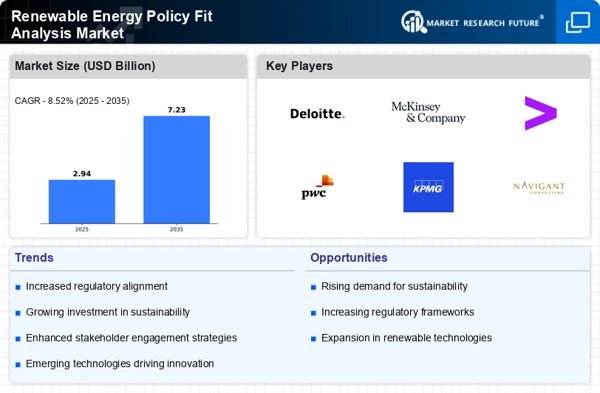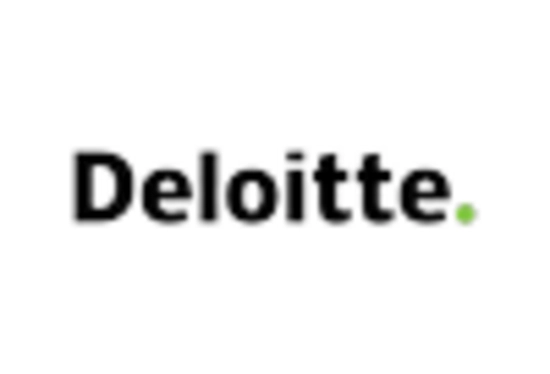Increasing Regulatory Support
The Renewable Energy Policy Fit Analysis Market is experiencing a notable increase in regulatory support from various governments. This support manifests through the establishment of favorable policies and incentives aimed at promoting renewable energy adoption. For instance, many countries have set ambitious targets for renewable energy generation, which necessitates comprehensive policy analysis to ensure alignment with these goals. As of 2025, it is estimated that over 70% of nations have implemented or are in the process of developing renewable energy policies. This regulatory environment creates a robust demand for policy fit analysis, as stakeholders seek to navigate the complexities of compliance and optimize their strategies accordingly.
Technological Advancements in Energy Systems
Technological advancements play a pivotal role in shaping the Renewable Energy Policy Fit Analysis Market. Innovations in energy storage, grid management, and generation technologies are transforming the landscape of renewable energy. For example, the integration of smart grid technologies has enhanced the efficiency and reliability of renewable energy sources. As these technologies evolve, the need for policy frameworks that accommodate and promote their deployment becomes increasingly critical. The market for energy storage solutions alone is projected to reach USD 200 billion by 2026, indicating a substantial opportunity for policy fit analysis to ensure that regulations support these advancements effectively.
Investment in Renewable Energy Infrastructure
Investment in renewable energy infrastructure is a critical driver of the Renewable Energy Policy Fit Analysis Market. As countries strive to meet their renewable energy targets, substantial financial resources are being allocated to develop infrastructure such as wind farms, solar parks, and hydroelectric facilities. In 2025, global investments in renewable energy infrastructure are projected to exceed USD 1 trillion, reflecting a robust commitment to transitioning towards sustainable energy sources. This influx of capital necessitates comprehensive policy fit analysis to ensure that investments are aligned with regulatory frameworks and that they maximize the potential for long-term sustainability and economic viability.
Growing Public Awareness and Demand for Sustainability
Public awareness regarding climate change and sustainability is on the rise, significantly influencing the Renewable Energy Policy Fit Analysis Market. As consumers become more environmentally conscious, there is a growing demand for sustainable energy solutions. This shift in consumer behavior is prompting governments to adopt more aggressive renewable energy policies. Surveys indicate that approximately 80% of the population in various regions supports increased investment in renewable energy. Consequently, this heightened demand necessitates thorough policy analysis to align governmental initiatives with public expectations, ensuring that policies are not only effective but also resonate with the values of the populace.
International Collaboration on Renewable Energy Initiatives
International collaboration is increasingly shaping the Renewable Energy Policy Fit Analysis Market. Countries are recognizing the importance of working together to address global energy challenges and share best practices in renewable energy policy development. Initiatives such as international agreements and partnerships facilitate knowledge exchange and foster innovation in policy frameworks. As of 2025, numerous countries are engaged in collaborative projects aimed at enhancing renewable energy deployment. This collaborative spirit underscores the need for policy fit analysis to ensure that national policies are harmonized with international standards and commitments, ultimately driving a more cohesive approach to renewable energy development.


















Leave a Comment